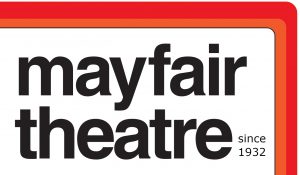SIX DEGREES OF PIXAR
josh on March 14, 2010

Eleven years ago I was very excited to go see a new non-Disney non-musical animated movie called The Iron Giant. Equal to thoughts that I had that it was going to be great, I also had a feeling that it would make no money. I was fairly confidant that it was going to be in the category of classic film not seen by many. Alas, I was correct. The Iron Giant was pretty much universally loved by every critic and movie-goer that saw it. Now if only more people had seen it. The picture cost Warner Bros $70 million to produce and made back about $23 million. The following year, Fox released another animated sci-fi epic Titan A.E. It also cost $70 million and made about $23 million in return. Hence the death bells rung at the concept for studios to attempt the art of classical animation as big screen entertainment.
Lorenzo di Bonaventura, president of Warner Bros. at the time, explained, “People always say to me, ‘Why don’t you make smarter family movies?’ The lesson is, every time you do, you get slaughtered.”

The film was directed by Brad Bird, who was coming off of a successful stint in television animation, where he helped to develop both The Simpsons and King of the Hill. Luckily, Brad Bird’s old friend and animation colleague John Lasseter was able to offer him a new gig, despite his latest effort not being box office gold. He and PIXAR went on to win Best Animated Film Oscars for both The Incredibles and Ratatouille.
Meanwhile, even the grand master of traditional animation was floundering. Disney made the somewhat shocking announcement that their 45th big screen animated movie, the 2004 cow starring feature Home on the Range, would be the the last non-CG cartoon that they would produce, and most of the animation staff was laid off.
In 2006, the Disney juggernaut acquired PIXAR. My first thought was “Oh no! Disney is going to ruin PIXAR!”. Then something great happened, a bunch of long time PIXAR staff members were given various high positions of power at Disney, and PIXAR was left alone. And what did they do when they took over the company? They said that there will be no more sub-par straight to video-store sequels of classics like Lady and the Tramp and Cinderella. They re-instigated the tradition of short animation in front of features (the first was the amazing Goofy cartoon How to Hook Up Your Home Theatre, which was in front of the not so amazing National Treasure 2). Their greatest move (and a somewhat ironic one), was when the CG geniuses at PIXAR re-hired the animation department that Disney had let go and re-opened the gates to old school cartoons at Disney.

The come-back effort took form as 2009’s The Princess and the Frog, a project from the directors of modern classics Aladdin and The Little Mermaid. An American fairy tale, featuring Broadway style songs, set in 1920’s New Orleans (I’m pretty sure the first 20th century fairy tale to be considered a Disney Classic). From a financial standpoint, the film did very well (almost $250 million worldwide). From an award standpoint , the film did very well (three Oscar nominations amongst other trophy’s). And most importantly (well…I guess to some the money part is the most important), it was good and people liked it.
So thanks to PIXAR, a genius like Brad Bird got a second chance at success. And the whole medium of classical animation on the big screen looks like it may have found a new lease on life.
Get the kids out of the house (or come without them) and catch both impressive pieces of animation as part of March Break matinees at the Mayfair.
The Princess and The Frog – March 17th and 18th at 1PM
The Iron Giant – March 19th and 20th at 1PM
